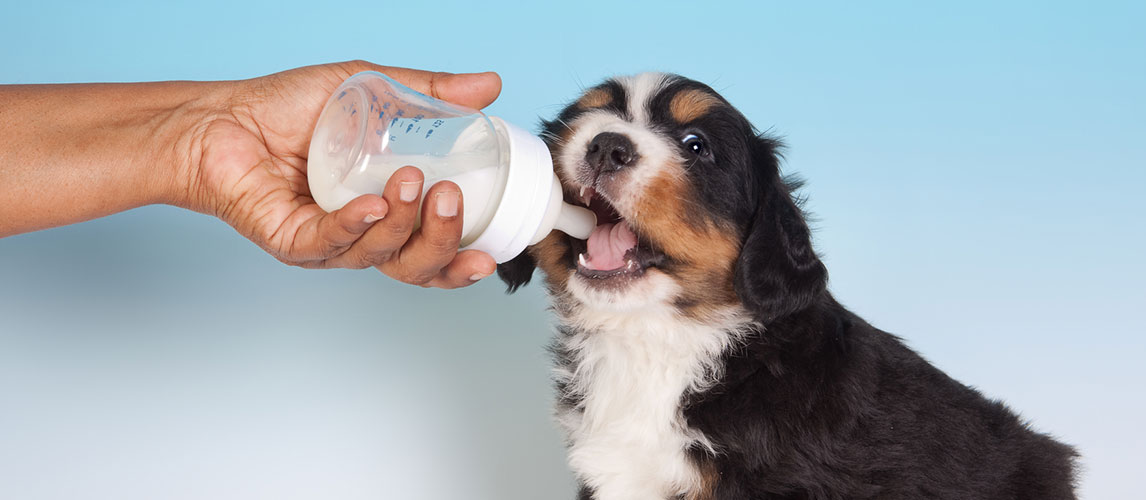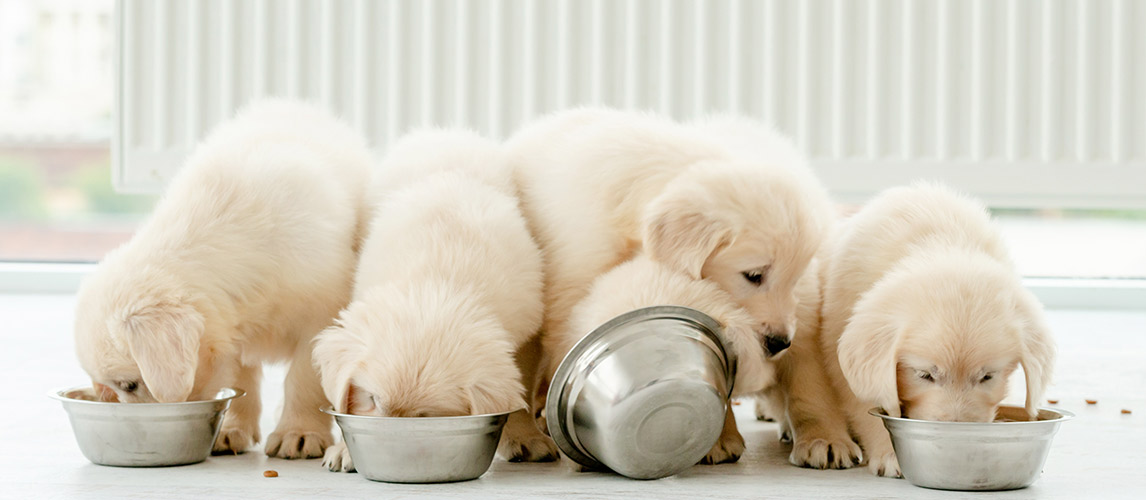In an ideal world, you would never have to bottle feed a puppy. The need only arises if a pup has been orphaned because the Mom dog has sadly died, or if the puppy has been abandoned or rejected by their Mom. It can also become necessary if a little puppy is so weak or ill that they cannot nurse for themselves. When any of these scenarios happen, they cannot get the nutrition that they need and their health can decline quickly. You now have the responsibility of keeping them alive.
This is always the last option as a mother’s milk is far and away the best nutrition for a puppy. It has exactly the nutrients that they need and protects them from infection. The decision to start bottle feeding puppies should be taken after you have taken veterinary advice. Once you have done this – you can develop the skills to do it correctly. It can be nerve-wracking at first but you will soon get the hang of it and your confidence will grow.
To get you started, here are the basics on how to feed puppies with a bottle.
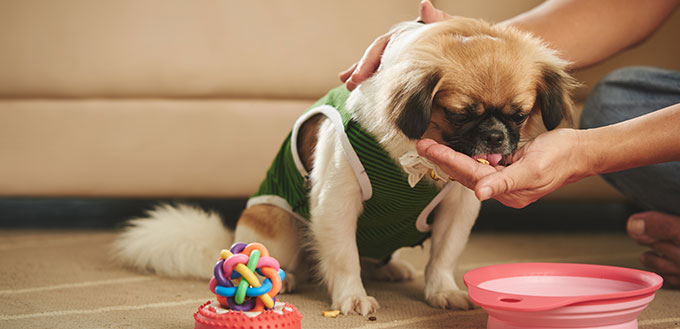
The Basics of Bottle Feeding a Puppy
If you have a pregnant dog that will be giving birth soon, it’s a good idea to be as prepared as possible just in case things go wrong with the newborn puppies.
Related Post: Supplements for Pregnant Dogs
Get the Equipment Ready
It is sensible to get some supplies in, just in case you have to step in quickly to save a puppy’s life. Let’s start with the milk that you should use. Always buy puppy formula, it is available as a powder or as liquid milk. This type of milk will have the exact blend of fats, proteins and vitamins and minerals that a newborn puppy needs. If you buy powdered milk for puppies, you will simply have to add warm water before you use it. Do not be tempted to use human milk formula, it does not have the correct nutrition for your puppy and could make them ill.
Related Post: Puppy Milk Replacers
You also need a bottle and a nipple that is small enough to fit in your puppy’s mouth. You can buy these separately but you can also get kits for feeding pups that will contain all the equipment that you are likely to need. A human baby-bottle is fine as are human bottle nipples that are available for premature babies – they are very small.
Taking the Decision to Bottle Feed a Puppy
Bottle feeding puppies should always be the last resort and the decision to do so should be taken after talking to your vet. If possible, the start of artificial feeding methods should be delayed until the puppy is several weeks of age. This is because the very first milk that a Mom dog produces, the colostrum, is very rich in both nutrients and antibodies which help puppies to fight infections. If it is at all possible, the puppy should get this for the first 24 hours of their life. Obviously, this is not possible for orphaned puppies who will need an alternative feeding method right away.
Once you have taken the decision to bottle feed newborn puppies, it will be a big commitment and is very time-consuming.
The Practicalities of How to Feed a Newborn Puppy
New puppies will need to be fed every two hours during the day and twice at night. You will need to make up the puppy milk replacement by mixing it with warm water according to the manufacturer’s instructions. If you have ready made cartons of puppy milk replacement, you just have to warm it up. Take care that it is not too hot, it should only be at room temperature. You can test this by dropping a little on the inside of your wrist – it should not feel hot or cold.
For very young puppies, you could start by filling a 3ml syringe with the puppy milk replacement and squeezing it into your puppy’s mouth. For older puppies (those that are a couple of weeks of age), you can use a bottle and nipple. Some nipples are supplied with no hole in the end. If this is the case, you will need to make two holes with a needle – but hold it over a flame first to sterilize it. It is critical that you check how fast the milk comes out of the nipple. If it is too fast, the puppy could aspirate it (breathe it in) and choke or it could enter the lungs where it can set up inflammation and cause pneumonia. This is caused by the holes being too big.
Hold the puppy gently and face down on your lap – never hold a puppy on their back to feed them. Put the nipple in their mouth and allow them to suck. The nipple should be held horizontal to puppies or at a slight angle.
So, how much formula should a newborn puppy eat? Most of the time a puppy will need six feeds a day and at least one at night. By the time they reach three weeks of age, this will have reduced to four feeds a day and none at night. Puppies that are under a month, need around 3.5 calories for every ounce of body weight every 24 hours. As most puppy milk has one calorie in every ml, therefore newborn puppies need a total of 22.5ml which works out at around 3.75ml in each feed. This is just a rough guide and you may need to adjust it. However, it is always best to give your puppies lots of small feeds rather than a few big ones.
Newborn puppies have to be ‘burped’ halfway through and you do this by putting them over your shoulder just as you do with a human baby. You also pat their back. You’ll soon learn how to tell if puppies have had enough food. They will have a full little stomach, they will feel warm and will be sleepy most of the time. In general, only hungry puppies wake up and cry! However, if the puppy feels cold and is lethargic or is squirming, this is a bad sign and you must call your vet right away. Cold puppies that are not eating can go downhill very rapidly and may need IV fluids and a couple of nights in-patient treatment at the vet.
Once the feeding is over, you can help puppies to digest the feed and too poop and pee by rubbing their lower belly area.
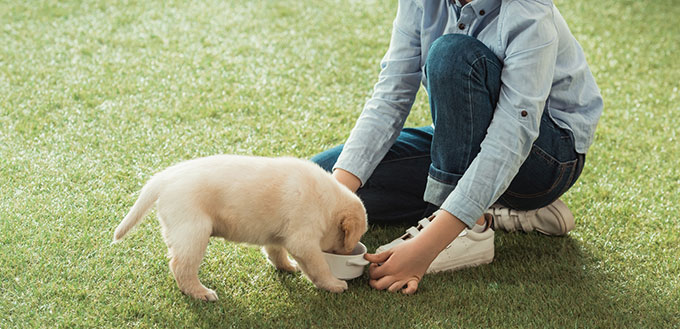
Feeding Very Tiny Toy Breed Pups
Toy breed puppies are unbelievably small and feeding them can be a huge challenge. The weakest of the litter (often called the runt) are often very weak and have trouble feeding. They may not be strong enough to suck and even the smallest nipples that you can get will be too large for their tiny mouths. It is best to start these puppies off with an eye dropper. If necessary, you can squeeze it to get the food into their mouth and then all they have to do is swallow to get some nutrition and hydration. Point the dropper into the side of the puppy’s mouth so that the feed does not flow directly down their throat where it can cause choking and gagging and in the worst cases aspiration.
An eye dropper is preferable to a syringe for feeding very small puppies because they have the option of sucking it to get some feed out. As they get stronger, you can squeeze it less and they can suck more and they get the idea that the act of sucking gets them some food. This makes it easier to transfer them onto a bottle and nipple as they grow.
The syringe is the last resort and should only be used when there is no other way to get the feed into your puppy. You may be able to find nipples and bottles that are designed for smaller animals, such as rabbits, that you could use to begin with.
Take a look at our article on Portable Dog Water Bottles.
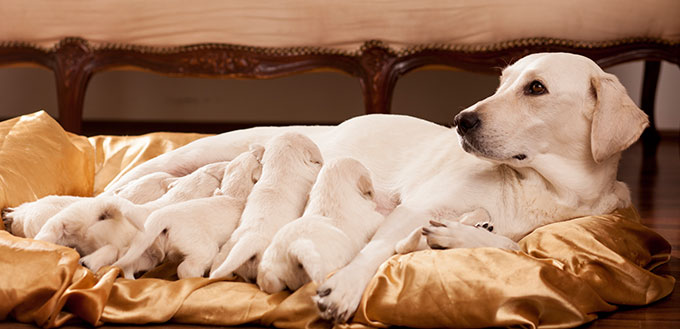
Tube Feeding and Sponge Feeding Very Weak Pups
Tube feeding is another method that can be used for pups who are not able to nurse. It is a highly skilled procedure and you should only attempt to carry it out once a qualified person (an experienced breeder, a vet or a veterinary nurse) has shown you how to do it correctly. If the tube goes down the windpipe (trachea) and not down the esophagus (food pipe) the feed will go into the lungs instead of the stomach and this is very dangerous. You will need to purchase a special tube feeding kit for puppies with the correct size tube for your breed.
If you are feeling worried about tube feeding puppies, you may be more comfortable with sponge feeding which is gentler and less invasive. However, the pup must be strong enough to suck at least a little. All you need is a small sponge (cosmetic sponges are ideal) and you cut it at one end to match the size of the Mom dog’s teat. You also need a syringe.
Now you cut a hole at the other end of the sponge. Fill the syringe with feed and poke it into the hole. Dip the teat end of the sponge in milk and put it into the pup’s mouth so that they suck. Once they start sucking, gradually press the plunger so the syringe replenishes the milk in the sponge and it flows as the pup sucks. You need to do this at exactly the right rate – too much and you will flood the sponge but too little and the pup will be sucking air.
Stopping Bottle Feeding
This is just a temporary measure! Once the puppies starts to chew on the nipple you can start to wean them onto a mix of high-quality wet puppy food and milk replacer. This usually starts at around three to four weeks of age.
Once your pup is eating and drinking water, bottle feeding can stop and your pup will get all the nutrition they need from what they are eating.
Sources:
- Krista Williams, BSc, DVM, Feeding Orphaned Puppies, VCA
Note: The advice provided in this post is intended for informational purposes and does not constitute medical advice regarding pets. For an accurate diagnosis of your pet's condition, please make an appointment with your vet.


